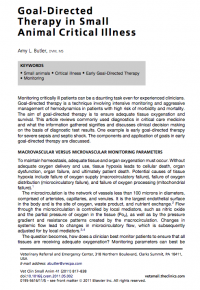
Monitoring critically ill patients can be a daunting task even for experienced clinicians. Goal-directed therapy is a technique involving intensive monitoring and aggressive management of hemodynamics in patients with high risk of morbidity and mortality. The aim of goal-directed therapy is to ensure adequate tissue oxygenation and survival. This article reviews commonly used diagnostics in critical care medicine and what the information gathered signifies and discusses clinical decision making on the basis of diagnostic test results. One example is early goal-directed therapy for severe sepsis and septic shock. The components and application of goals in early goal-directed therapy are discussed.